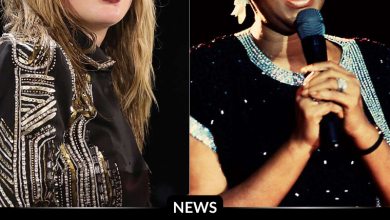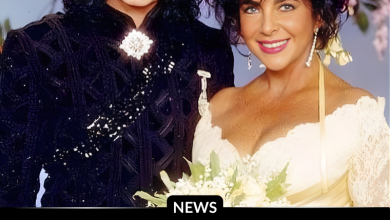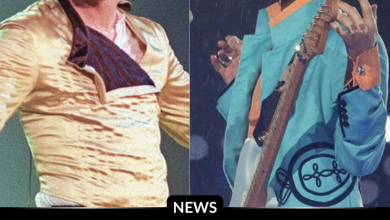Audrey Hepburn’s Final Film: Why Spielberg’s ‘Always’ Became Her Last On-Screen Farewell
OPINION: This article may contain commentary which reflects the author's opinion.
Audrey Hepburn, one of the most beloved and iconic figures in Hollywood history, shocked the world when she made the decision to step away from the limelight at the height of her fame. Known for her roles in timeless classics like Roman Holiday, Breakfast at Tiffany’s, and Sabrina, Hepburn had achieved superstardom by the mid-1960s. Yet, in 1967, she made the bold decision to leave Hollywood behind and relocate to Europe permanently. This article explores the reasons behind her surprising departure and how it shaped the latter part of her life.
The Height of Fame
Audrey Hepburn’s Hollywood career began in 1953 with her breakout role in Roman Holiday, which earned her an Academy Award for Best Actress and catapulted her into international stardom. Over the next decade, Hepburn became one of the most recognizable and adored actresses in the world. She starred in a string of successful films, including Sabrina (1954), Funny Face (1957), Breakfast at Tiffany’s (1961), and Charade (1963), which solidified her as a Hollywood legend. During this period, Hepburn garnered four more Oscar nominations, three BAFTA Awards, and became known not only for her acting but for her grace and fashion sense.
Despite her success, Hepburn’s career was not without its struggles. In 1967, after a tumultuous 14-year marriage to actor Mel Ferrer, which had included personal challenges such as two miscarriages and allegations that Ferrer was controlling, Hepburn made a pivotal decision. She moved to Switzerland, where she had already purchased a secluded estate. This marked the beginning of her shift away from Hollywood and toward a quieter life in Europe.
A New Life in Europe
The decision to leave Hollywood was not just about stepping away from her career, but also about finding peace and stability in her personal life. In 1969, she married Italian psychiatrist Andrea Dotti, further solidifying her connection to Europe. The couple’s life together focused on raising their family, and throughout the 1970s and 1980s, Hepburn returned to the screen only sparingly.
Her appearances during this period were few and far between, with notable roles such as her portrayal of Maid Marian in the 1976 film Robin and Marian, where she starred alongside Sean Connery. By the late ’80s, Hepburn began to devote herself more to charity work, particularly with UNICEF, a cause she would become deeply passionate about. She spent the remainder of her life traveling the world as an ambassador for the organization, using her fame to bring attention to the plight of children in need.
Hepburn’s Last Film Role
Hepburn’s final appearance in a feature film came in 1989 with Steven Spielberg’s Always, a romantic drama that told the story of an aerial firefighter who dies in a plane crash and returns as an angel. The film, based on the 1943 drama A Guy Named Joe, starred Richard Dreyfuss and Holly Hunter, with Hepburn playing the role of Hap, the guiding angel. Although the role was initially written for Sean Connery, Spielberg reimagined it as a female part and offered it to Hepburn, who had been largely absent from the screen for two decades. To Spielberg’s surprise, Hepburn accepted the role.
Hepburn’s experience filming Always was described as “wonderful” by the actress herself, and she donated most of her $1.5 million paycheck to UNICEF. Despite the film’s modest success, Hepburn found immense satisfaction in her work on the project and expressed a willingness to collaborate with Spielberg again in the future. However, the next film Spielberg worked on was Hook (1991), and Hepburn did not participate.
Posthumous Recognition
After her appearance in Always, Hepburn continued to engage in projects that were close to her heart, such as the PBS documentary series Gardens of the World with Audrey Hepburn, which earned her a posthumous Emmy Award. She also recorded Audrey Hepburn’s Enchanted Tales, a spoken-word album for children, which won her a posthumous Grammy Award. These accolades made Hepburn one of the rare few to have won an Emmy, Grammy, Oscar, and Tony, solidifying her legacy as a beloved figure in entertainment.
Why Did Audrey Hepburn Leave Hollywood?
Hepburn’s decision to step away from Hollywood at the peak of her career can be seen as a personal choice to prioritize her family and humanitarian work over the pressures of fame. After her difficult marriage and the challenges of balancing her career with motherhood, she sought a quieter life in Europe. Her relationship with Andrea Dotti and her deepening involvement with UNICEF also played key roles in her decision to retire from acting.
Though Hepburn’s time in Hollywood was relatively brief compared to some of her peers, her legacy has endured far beyond the silver screen. Her influence as an actress, fashion icon, and humanitarian continues to be felt today, and her decision to leave Hollywood, while surprising at the time, ultimately allowed her to pursue the causes that were most meaningful to her.
In conclusion, Audrey Hepburn’s exit from Hollywood was a deliberate and heartfelt choice, one driven by personal fulfillment and a desire to make a difference in the world. Though her time in the limelight was short, her lasting impact as both an actress and a philanthropist remains a testament to her grace, beauty, and selflessness.



